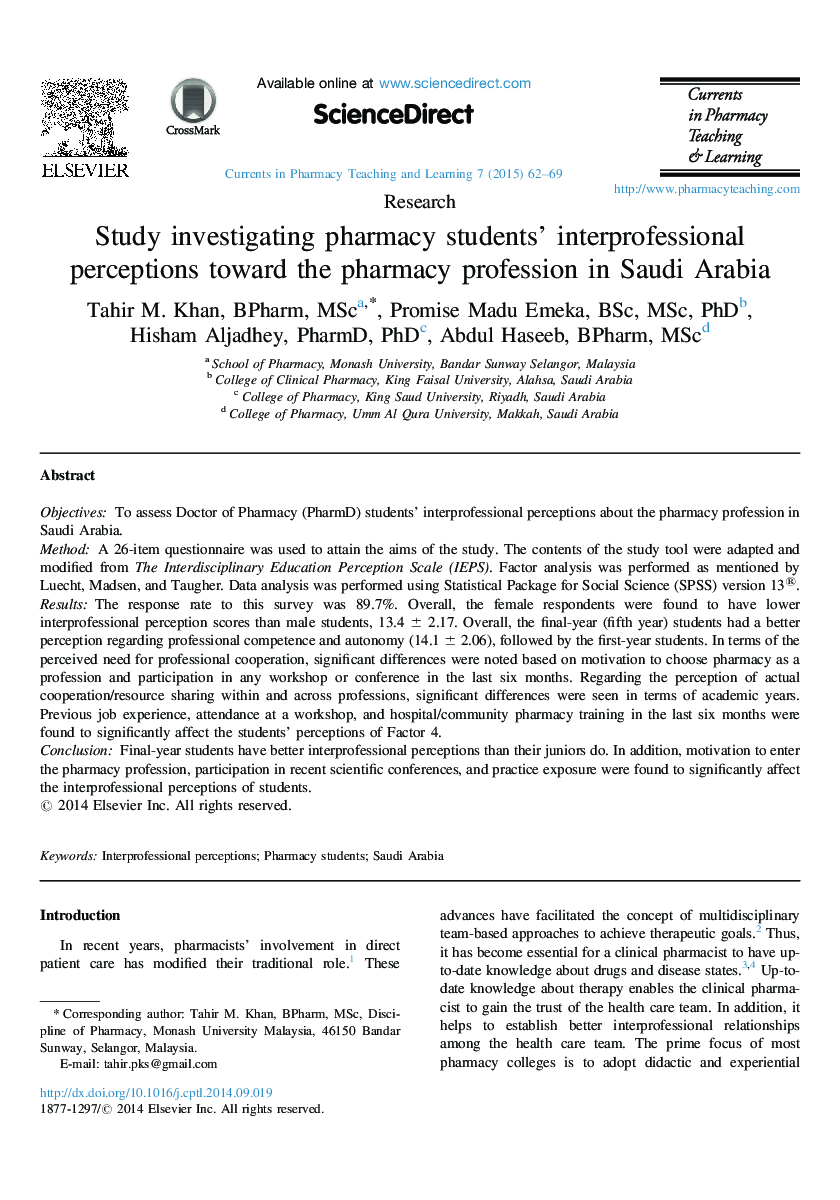| Article ID | Journal | Published Year | Pages | File Type |
|---|---|---|---|---|
| 353021 | Currents in Pharmacy Teaching and Learning | 2015 | 8 Pages |
ObjectivesTo assess Doctor of Pharmacy (PharmD) students’ interprofessional perceptions about the pharmacy profession in Saudi Arabia.MethodA 26-item questionnaire was used to attain the aims of the study. The contents of the study tool were adapted and modified from The Interdisciplinary Education Perception Scale (IEPS). Factor analysis was performed as mentioned by Luecht, Madsen, and Taugher. Data analysis was performed using Statistical Package for Social Science (SPSS) version 13®.ResultsThe response rate to this survey was 89.7%. Overall, the female respondents were found to have lower interprofessional perception scores than male students, 13.4 ± 2.17. Overall, the final-year (fifth year) students had a better perception regarding professional competence and autonomy (14.1 ± 2.06), followed by the first-year students. In terms of the perceived need for professional cooperation, significant differences were noted based on motivation to choose pharmacy as a profession and participation in any workshop or conference in the last six months. Regarding the perception of actual cooperation/resource sharing within and across professions, significant differences were seen in terms of academic years. Previous job experience, attendance at a workshop, and hospital/community pharmacy training in the last six months were found to significantly affect the students’ perceptions of Factor 4.ConclusionFinal-year students have better interprofessional perceptions than their juniors do. In addition, motivation to enter the pharmacy profession, participation in recent scientific conferences, and practice exposure were found to significantly affect the interprofessional perceptions of students.
